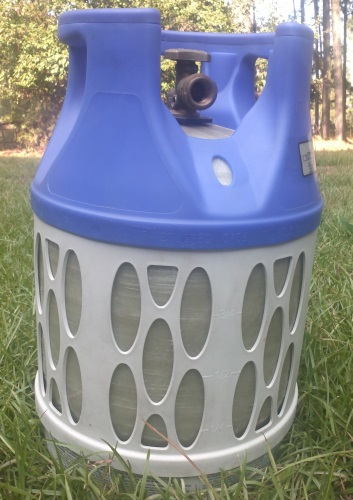- Home
- Calendar
- Join Scouting
- School Closing
- School Calendar
- Scout Forms
- Scout Shops
- Programs
- Weather
- Snow Reports
- National scouting Site
- Scouting magazine
- Scoutparents.org
- Scouting Alumni Reconnect
- National Scouting Museum
- 2017 National Scout Jamborees


FOUR WAYS TO FIGURE OUT HOW MUCH IS LEFT
 The average full-size gas grill goes through about 1 pound of propane for every 30 minutes of cooking time. But how many of us cook with a stopwatch? There are a few simple ways of determining how much propane is left in the tank. 1 The bathroom-scale method. A normal-size 20-pound capacity tank weighs 17 to 18 pounds empty, and 34 to 35 pounds after being filled. To determine how much gas is left, weigh the tank and subtract 18 pounds for the tank; multiply this number by 30 to determine approximately how many minutes of grilling time are left. (weigh the tank -- 18 * 30 = minutes of grilling time are left) 2. The gadget method. A gauge, such as the Gasgard unit shown (above) costs about $20 and will give you a constant readout on how much gas is left, in the tank. 
4.All new fiberglass tanks  PLAY IT SAFE The National Fire Prevention Association has mandated that tanks sold or refilled as of April 1, 2002, have an overfill-protection device (OPO). An OPO limits a tank to 80 percent of its capacity to allow room for the propane to expand safely in higher temperatures without releasing gas. As an added precaution, gas won't come out of a tank with an OPO unless it's attached to an appliance. Tanks with an OPO have triangular-shaped hand wheels with three lobes; non-OPO tanks have round or star-shaped ones (see below left). All tanks have a date of manufacture stamped on or near the collar. Once a tank reaches 12 years of age, the Department of Transportation requires it either be taken out of circulation or be recertified and restamped, lengthening its potential life span another 5 years. Never dispose of an old or damaged tank in the Overfill-protection device (OPO) or not? What your hand wheel tells you. garbage or at a landfill. Bring it to a cylinder- , exchange location where it can be disposed of properly; some places charge a fee, others don't. When you reconnect your refilled tank, check for cracked or brittle grill hoses. Check to make sure all of your connections are tight using soapy water or a special leak -detection solution. Open the tank valve, but leave the grill off while testing. When you're done grilling, turn off the grill and close the valve on the tank. Ii  A FEW TIPS ON REFILLING AND STORING When it comes to summertime grilling, some people are "overnighters" and some are "weekenders;' while others are strictly "Fourth-of- Julyers." Regardless of how often you grill, sooner or later you need more propane. Here are a few tips:
take any tank in good condition for trade. Some will charge an upgrade fee to those trading in an outdated tank. |
Bookmark To:






Site Disclaimer
Please report any broken links.
Nov 8, 1999 - Nov 8, 2014 15 years online
best view at 1024 X 768 higher Browers: IE6 and Firefox 2 Support
Update: March 11, 2015 2:22 PM
Designer and Owner by
©Copyright 1999 - 2015 bsapackman.com

